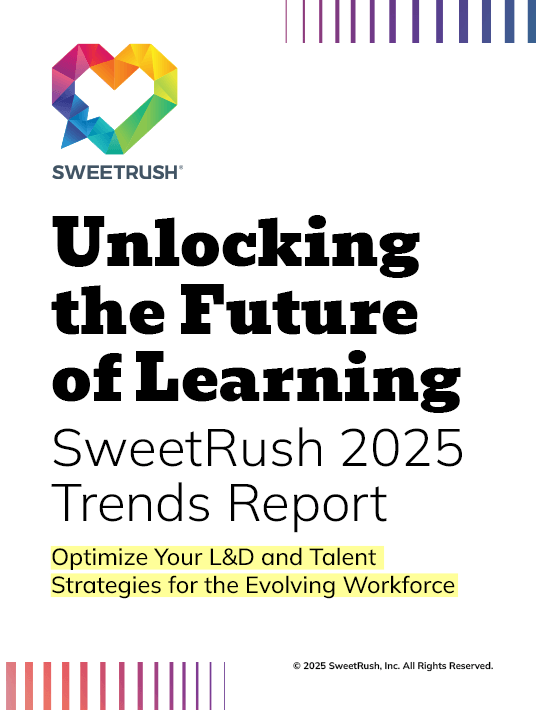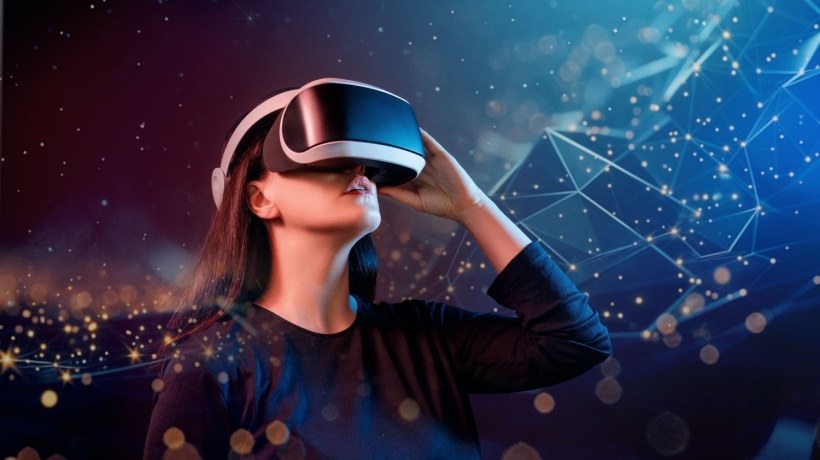Modern ILT Impact: Leveraging Live Innovation
With the focus for 2025 for greater human engagement and growth, Instructor-Led Training (ILT) remains an influential tool for knowledge transfer and skill development. ILT modernization is a necessity to enable greater retention and skills acquisition for the modern learner. The new era of Live Experiential Learning (LEL) in 2025 provides a path to interactive life experiences that empower learners to receive knowledge in an innovative, experiential way that is guided by human influences and creates a fully personalized learning ecosystem.
Interactive live training experiences are transforming the way we learn and develop skills. Blending real-time interaction with engaging learning creates immersive and impactful experiences. Embracing these modern approaches ensures ILT evolves to optimize the human factor in today’s digital era of learning.

eBook Release
Unlocking The Future Of Learning: SweetRush 2025 Trends Report
Gain insights from SweetRush strategy experts to navigate change and build a future-ready workforce and business.
Benefits Of Live Experiential Learning
As live experiential learning evolves, understanding its advantages for retention and engagement is crucial.
This approach offers significant benefits, including:
- Enhanced Learning—Fosters deeper knowledge and improved cognitive retention.
- Analytical Abilities—Cultivates critical thinking and creative problem-solving skills through hands-on-simulations.
- Skill Expansion—Enhances skills and competencies through the practical application of knowledge.
- Increased Engagement—Motivates learners through real-world relevance experiential activities.
- Collaborative Teamwork—Promotes effective teamwork and enhances communication skills through group activities.
By incorporating live experiential learning, organizations can cultivate more engaging, effective, and impactful learning experiences. Given the significant impact of experiential learning on learner retention and engagement, learning leaders can strategically develop immersive learning opportunities for the modern workforce.
Key Components Of Live Experiential Learning (LEL)
1. Virtual And Augmented Reality (VR/AR)
- Simulated Environments—Integrate realistic simulations of real-world scenarios.
- Interactive AR—Leverage AR to overlay digital information, which enhances understanding.
2. Gamification
- Role-Playing—Encourage learners to think critically in simulated environments.
- Point-Based Systems—Reward learners for completing tasks and demonstrating knowledge.
- Interactive Platforms—Leverage platforms that support gamification features.
- Instant Feedback—Provide immediate feedback to engage learners in the moment of need.
3. Interactive And Blended Learning
- Interactive Simulations—Create immersive and engaging learning experiences by replicating real-world scenarios, allowing learners to practice skills, make decisions, and learn in a safe and controlled environment.
- Augmented Classroom—Promote in-class collaboration through blended pre-classroom activities, such as videos.
- Experiential Collaborative Sessions—Encourage teamwork and problem-solving through group activities with immersive learning.
- Interactive Activities—Provide virtual and live opportunities for learners to experiment and apply knowledge.
- Self-Directed Learning—Offers learners the flexibility to progress on their own path.
4. Personalized Learning Experiences
- Adaptive Learning Platforms—Personalize content and assessments using AI-powered tools to meet individual learner needs.
- Individualized Coaching—Provide personalized guidance and support to help learners to achieve their goals.
- Collaborative Learning—Facilitate knowledge sharing and collaboration among learners.
- Personalized Content—Adapt learning content to suit individual learner needs and preferences.
- Real-Time Feedback—Provide immediate performance feedback and address questions promptly.
By incorporating immersive and personalized learning techniques, organizations create engaging and effective experiences that drive learner retention and performance.
Virtual Reality (VR) And AI Elevates Live Training
Some of the most innovative and proactive approaches in LEL are VR and AI. Leveraging VR and AI creates a truly immersive and impactful live training experience that ignites the way organizations learn and creates transformational learning.
Key ways to elevate learning engagement with VR and AI include:
- Simulated Ecosystems—Uses realistic simulations of real-world scenarios that allows learners to practice skills in a controlled environment.
- Direct Learning—Provides hands-on opportunities for learners to interact with virtual objects and perform tasks.
- Remote Collaboration—Enables seamless virtual collaboration among remote teams, fostering teamwork and knowledge sharing within the VR environment.
- AI-Powered Learning—Utilizes AI to personalize VR training experiences and provides real-time feedback and adaptive learning pathways.
- Advanced Haptics—Incorporates haptic feedback to enhance the realism of virtual experiences.
Conclusion
By embracing this trend, Live Experimental Learning (LEL), as a modern hybrid model, cultivates highly engaging and effective learning journeys for all learners. Prioritizing the learner experience is fundamental to successful knowledge transfer and lasting cognitive retention, both vital for individual and organizational progress.
Discover additional strategies for skilling, knowledge management, and strategic workforce planning with Unlocking The Future Of Learning: SweetRush 2025 Trends Report. You'll find ten key developments shaping L&D and talent in 2025 and beyond to build an agile, resilient, and productive workforce.








